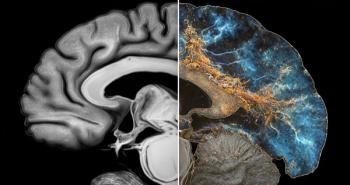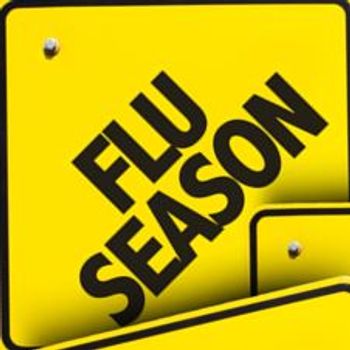
Childhood Cancer Survivors at Nine-Fold Risk for Secondary Sarcomas
CHICAGO -- Survivors of childhood cancers have a nine-fold higher risk of developing secondary sarcomas more than a decade after their original diagnosis, reported investigators here.
CHICAGO, Feb. 20 -- Survivors of childhood cancers have a nine-fold greater risk of developing secondary sarcomas more than a decade after their original diagnosis, reported investigators here.
Risk factors for secondary sarcomas included radiation therapy, chemotherapy with high doses of anthracyclines or alkylating agents, primary sarcoma, and a family history of cancer, wrote Tara O. Henderson, M.D., M.P.H. of the University of Chicago, and colleagues.
"As the childhood cancer survivor population ages and expands in number, clinicians and researchers must carefully identify patients who are at risk for secondary morbidities, particularly for secondary cancers," the authors wrote in the Feb. 21 issue of the Journal of the National Cancer Institute.
A history of childhood cancer and relevant exposure to chemotherapy and radiation can be helpful in evaluating patients with suspect lesions, because sarcoma symptoms are often non-specific, complicating the diagnosis, the authors noted.
Although several studies have linked radiation exposure in childhood to increased risk for sarcomas many years later, it was unclear whether other factors such as family history of cancer, prior chemotherapy, or primary cancer type were associated with increased risk for secondary sarcomas, the authors noted.
In the hunt for potential risk factors, they drew on data from the large scale Childhood Cancer Survivor Study, an ongoing study in 14,372 participants treated at 26 clinical centers in the United States and Canada.
The participants were surveyed at baseline (1992-2004) by questionnaires, and with two follow-ups sent from 2000 to 2003, and from 2001 to 2004.
The authors determined the risk of secondary sarcomas using standardized incidence ratios and excess absolute risk among survivors compared with general population data from the Surveillance, Epidemiology, and End Results (SEER) program.
They created Cox regression models to estimate hazard ratios for development subsequent sarcomas, reported as relative risks.
They found a total of 751 secondary cancers, 108 of which were sarcomas. The sarcomas occurred in 104 participants, four of whom had tertiary cancers. The sarcomas were confirmed as independent secondary cancers by medical records and pathology review. The secondary cancers were diagnosed a median of 11 years after the initial diagnosis of childhood cancer.
The investigators determined that the risk of secondary sarcoma was higher among childhood cancer survivors than among the general population by a factor of nine (standardized incidence ratio 9.02, 95% confidence interval 7.44 to 10.93).
The excess absolute risk of secondary sarcoma for the survivors was 32.5 per 100/000 person-years (95% CI 26.1 to 40.3/100 000 person-years).
Factors associated with higher standardized incidence ratios and excess absolute risk included:
- Young age at primary diagnosis, with children age 1-3 years at the time of diagnosis having a standardized incidence ratio of 15.39 (95% CI 10.59-22.46), and an excess absolute risk of 38.01/100,000 person years (95% CI 25.33-56.66/100,000 person years).
- Primary sarcoma diagnosis, with those who had a primary sarcoma having a standardized incidence ratio for a secondary sarcoma of 24.67 (95% CI 16.86 to 36.10), and an excess absolute risk of 101.50/100,000 person years (95% CI 68.00 to 150.53/100,000 person years).
- Family history of cancer, with those with a first degree relative who also had cancer having a standardized incidence ratio of 11.72 (95% CI 7.71 to 17.83), and an absolute excess risk of 50.03/100,000 person years (95% CI 31.28 to 78.54/100,000 person years).
In a multivariable logistic regression model, they found that an increased risk of secondary sarcoma was associated with:
- Radiation therapy -- relative risk 3.1, (95% CI 1.5 to 6.2).
- Primary diagnosis of sarcoma -- relative risk 10.1, (95% CI 4.7 to 21.8).
- History of other secondary neoplasms -- relative risk 2.2 (95% CI , 1.1 to 4.5).
- Treatment with higher doses of anthracyclines -- relative risk 2.3 (95% CI. 1.2 to 4.3).
- Treatment with higher doses of alkylating agents -- relative risk 2.2 (95% CI 1.1 to 4.6).
In addition to sarcoma, three primary cancers significantly associated with high risk of secondary sarcomas included bone cancer, Hodgkin's lymphoma, and kidney cancer (P for all
Newsletter
Enhance your clinical practice with the Patient Care newsletter, offering the latest evidence-based guidelines, diagnostic insights, and treatment strategies for primary care physicians.



























































































































































































































































































